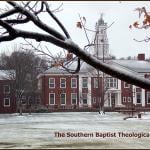John’s description of the harlot city (Revelation 17:4-5) that he sees in the wilderness is written in four clauses: She is clothed; she is gilded; she holds something in her hand; and she has a name on her forehead. These four clauses describe seven pieces of the harlot’s attire and equipment: She is clothed in (1) purple and (2) scarlet. She is gilded with (3) gold, (4) precious stone and (5) pearls. She has (6) a gold cup in her hand. And on her forehead... Read more
















